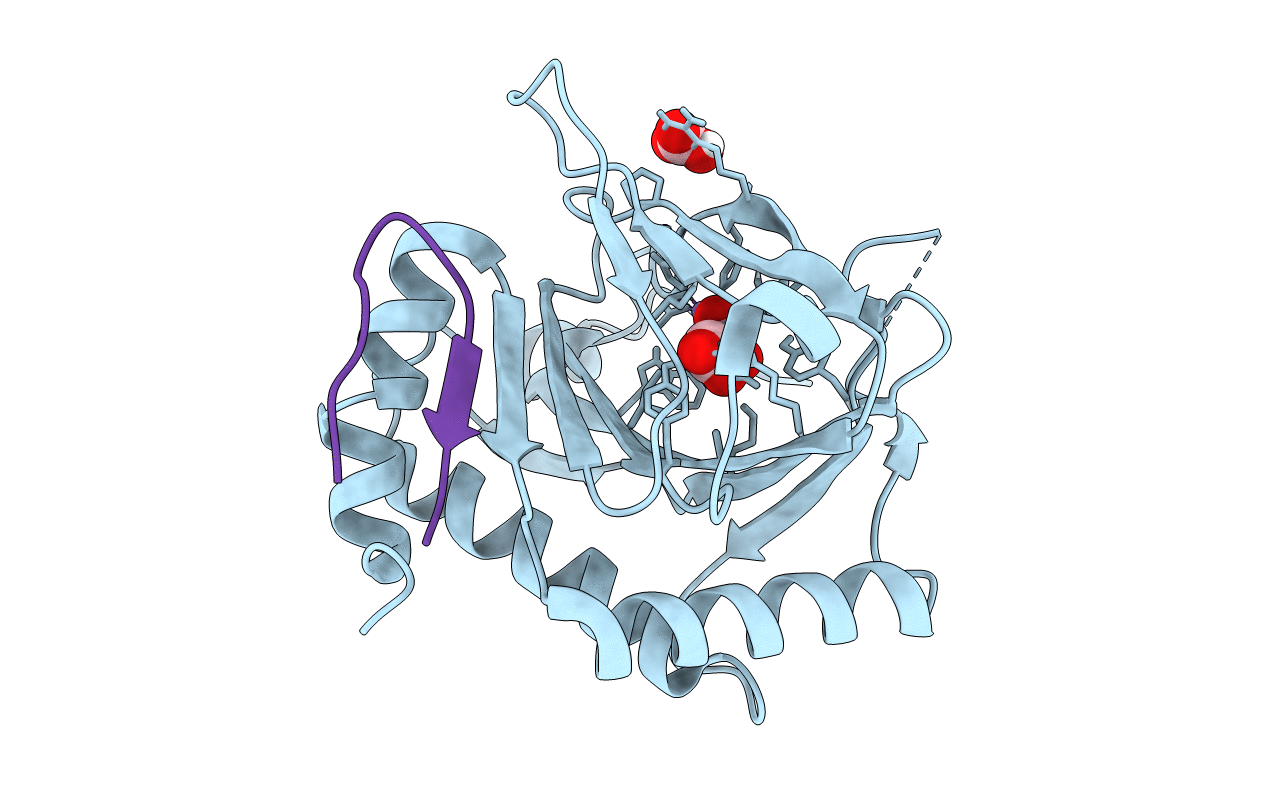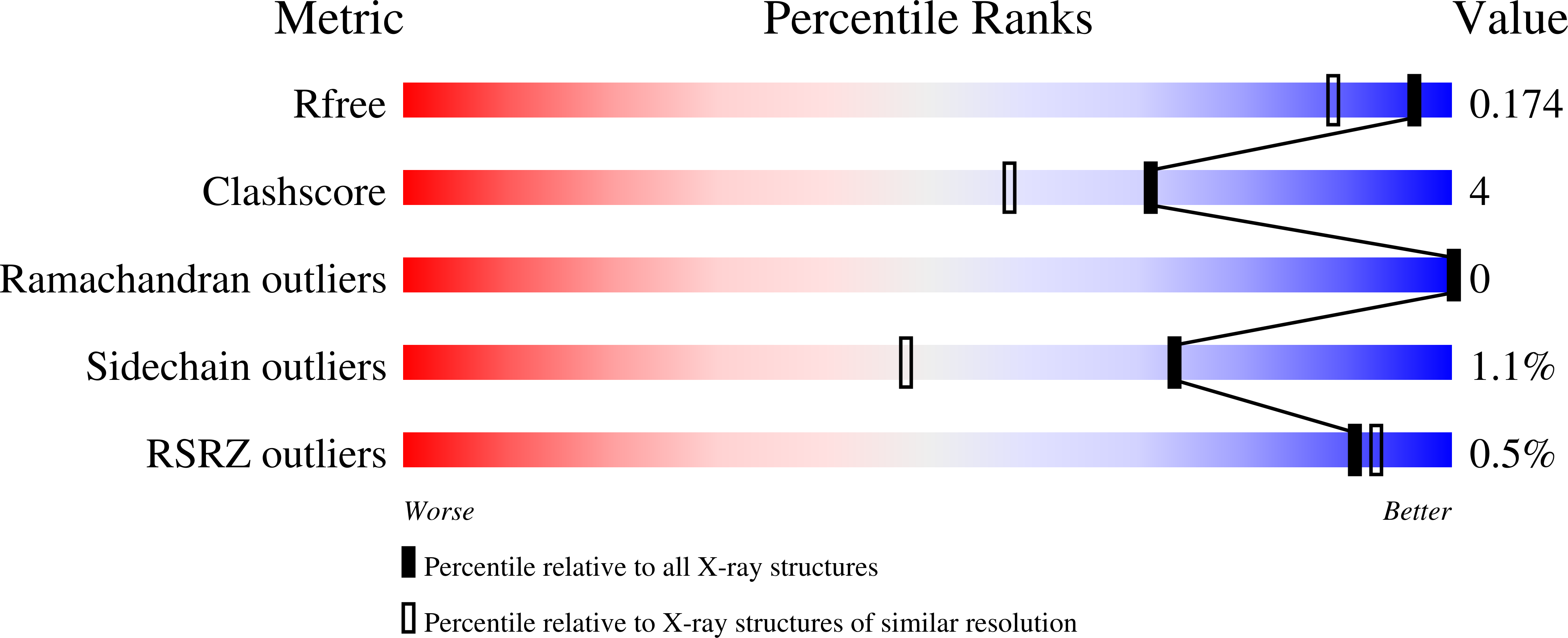
Deposition Date
2020-04-29
Release Date
2020-12-30
Last Version Date
2024-01-24
Entry Detail
PDB ID:
6YW1
Keywords:
Title:
HIF prolyl hydroxylase 2 (PHD2/ EGLN1) in complex with 2OG and RaPID-derived silent allosteric cyclic peptide 3C (14-mer)
Biological Source:
Source Organism:
Homo sapiens (Taxon ID: 9606)
synthetic construct (Taxon ID: 32630)
synthetic construct (Taxon ID: 32630)
Host Organism:
Method Details:
Experimental Method:
Resolution:
1.46 Å
R-Value Free:
0.17
R-Value Work:
0.16
R-Value Observed:
0.16
Space Group:
P 65


